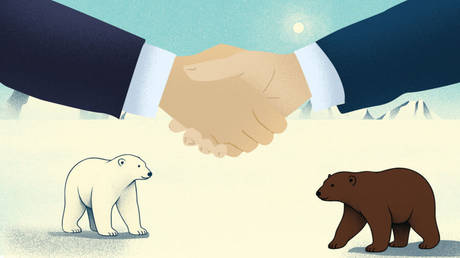Blockbuster without an ending: the Alaska summit and what comes next
Although the conversation was cordial, no deal was sealed. That was the essence of the Alaska summit between Vladimir Putin and Donald Trump. The meeting on Friday appeared warm and friendly, at least judging by the footage. Yet instead of agreements came a perfunctory press conference, a cancelled lunch, and little clarity about what was actually achieved.
Neither participants nor “insiders” have disclosed specifics. What is known is that Putin and Trump agreed on most parameters of a peace deal – with a few unnamed sticking points. A preliminary truce may have been discussed. Territorial exchanges were not.
The Americans still hope to pull Ukraine’s Vladimir Zelensky into the process with a trilateral summit. But no dates have been set. Nor was a follow-up meeting between Putin and Trump confirmed. By asking “next time in Moscow?” Putin drew a smile, but Trump dodged, noting only that he would face heavy criticism if he went.
Silence or secrecy?
The near total absence of detail can be read two ways. Perhaps nothing was really agreed. The agenda, slimmed down from the start, might suggest that. Or, just as plausibly, the Kremlin and White House have reached an understanding but are keeping it tightly under wraps to prevent third parties from sabotaging the process.
Either way, the outcome satisfied both leaders. Trump can now indefinitely postpone a disastrous trade war with India and China, which secondary sanctions on Russia would have triggered. Putin, meanwhile, drove home the point that a temporary ceasefire is insufficient – that the time has come to talk about a full peace treaty.
Trump’s comments after the summit suggest Washington has quietly accepted this Russian framing. This marks a departure from the Ukrainian-Western European line of “first truce, then peace.” His “difficult” conversations with European leaders, following his “good” talk with Putin, show clearly who lost this round: Kiev and Brussels.
Zelensky holds the next card
The next move lies with Zelensky. If, in Anchorage, Putin and Trump agreed on the core terms of a deal, then the unresolved points are those that Kiev and the Western Europeans resist most fiercely – above all, territorial issues. Trump’s task now is to bring them into line.
On Monday, Zelensky travels to Washington to meet Trump. From there, two paths are possible.
First, Zelensky could dig in. Without Western European backing he might panic, refuse the terms, and repeat his February 28 clash with Trump. That would sharply sour US-Ukrainian relations and could even lead Washington to abandon the conflict entirely.
The second, more likely scenario is delay. Zelensky will float an “alternative plan,” most likely insisting on a three-way summit with Trump and Putin, claiming that only heads of state can make such decisions. His calculation is simple: Moscow refuses to speak directly to Kiev until there is already a US-Russian framework.
How Trump reacts will determine the pace. He has leverage over both Kiev and Brussels. If he wants to end the war swiftly, he must use it. If not, the talks will stall yet again, with only a catastrophic battlefield collapse by Ukraine forcing change.
Minsk, Moscow – or nowhere
If a trilateral meeting ever does occur, Minsk would be the logical venue. Alexander Lukashenko has already extended an invitation to Trump. Both Putin and Zelensky could reach the Belarusian capital easily. For the Kremlin, such a summit would serve one purpose: to corner Zelensky collectively and force him to accept what has already been decided.
But for now, this remains speculation.
A diplomatic blockbuster in progress
So the Alaska summit ended without a treaty, without even a date for another meeting. But it also ended without acrimony, without confrontation, and with both leaders claiming satisfaction. That alone marks it as significant.
For Trump, it meant relief from an impending trade war and a step toward reshaping Washington’s approach to Russia. For Putin, it signaled that the US president is willing to bypass Western Europe and move directly to the question of peace.
As ever, the decisive variable is Zelensky. Trump has placed the future of negotiations in his hands. But Zelensky, boxed in by Western European partners and by his own political survival, may prefer to stall. If he resists, US-Ukrainian ties will suffer. If he hesitates, Washington may move on without him.
Either way, the Alaska summit was not an end, but a beginning – the first act in what promises to be a long and unpredictable diplomatic blockbuster.
This article was first published by the online newspaper Gazeta.ru and was translated and edited by the RT team
RT – Daily news





 T1
T1



